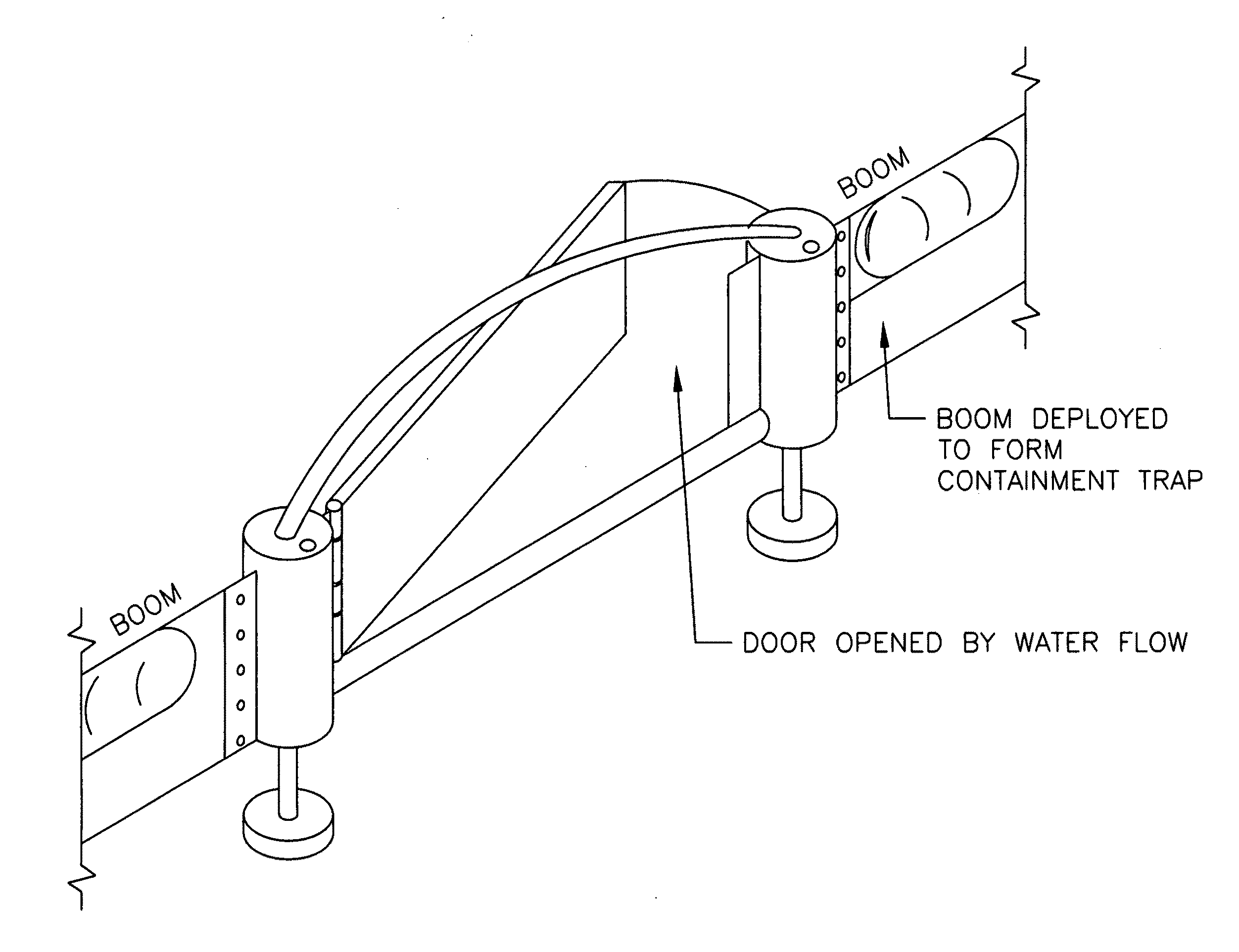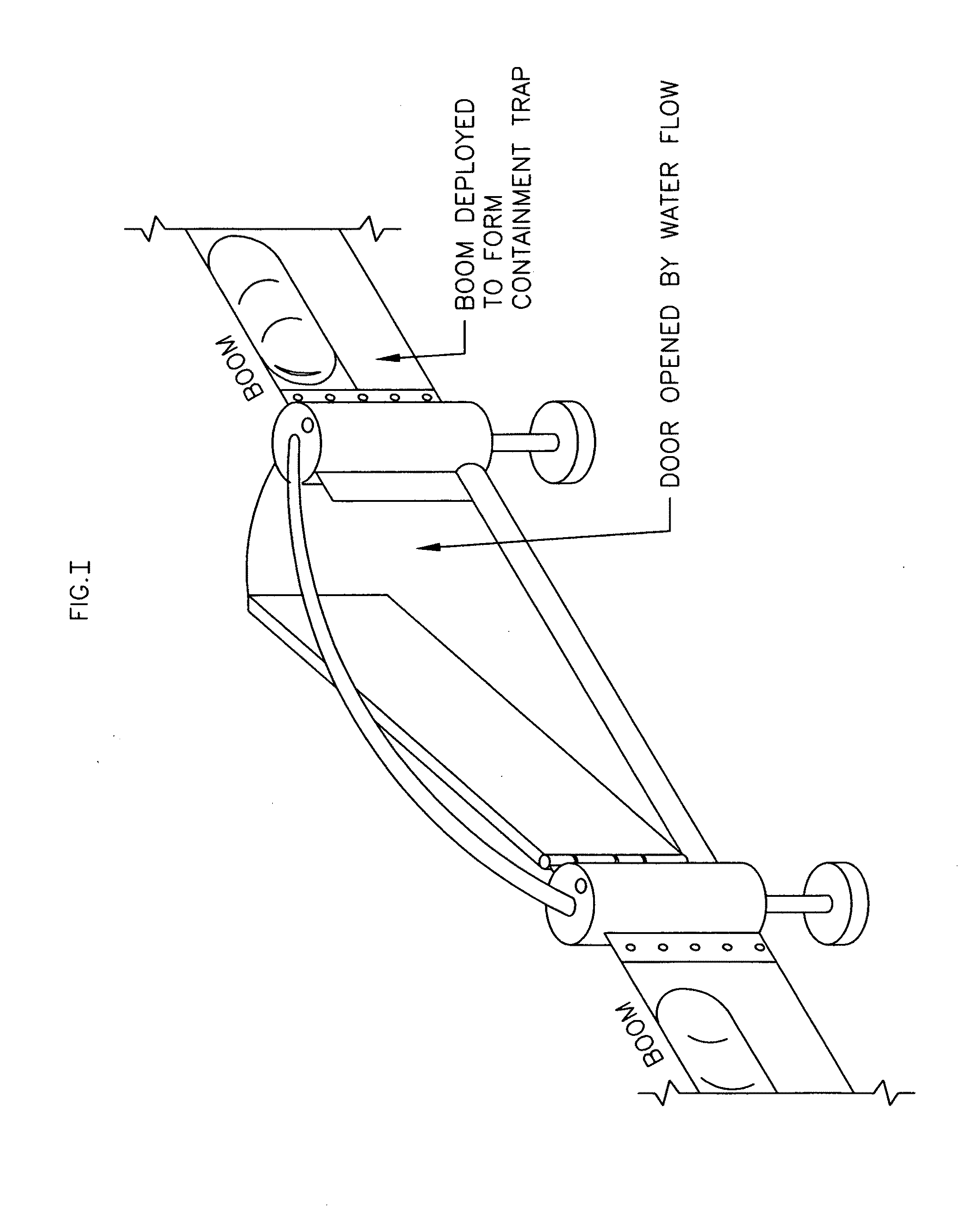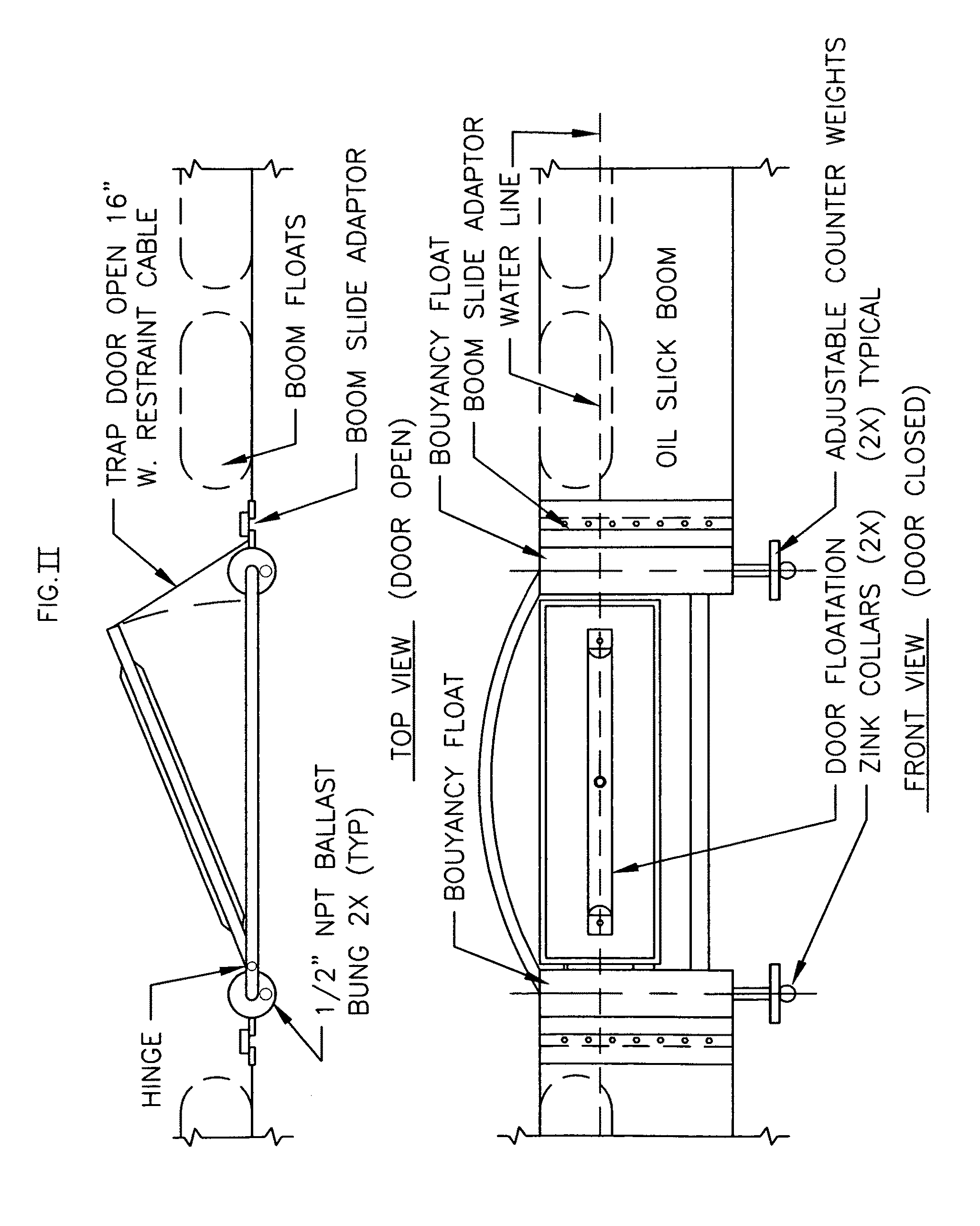Floating marine debris trap
a technology of floating marine debris and traps, which is applied in the direction of water cleaning, swimming pools, separation processes, etc., can solve the problems of suspicious negative effects on worldwide marine resources, certain classes of marine trash, and negative effects on both pelagic and local marine wild li
- Summary
- Abstract
- Description
- Claims
- Application Information
AI Technical Summary
Benefits of technology
Problems solved by technology
Method used
Image
Examples
Embodiment Construction
[0016]The floating marine debris trap is a combination of a door frame / door assembly connected to commercial oil slick containment boom. The invention is a combination of a unique floating door frame / door assembly and a series of oil slick boom deployment methods that form the floating marine debris trap. Regularly available commercial oil slick containment boom combined with various types of door frame / door entry systems and specific deployment methods will trap both oil based water contaminants and floating debris. Trapped aquatic debris may be returned to the water or disposed or per local, state and federal regulations. Four different door configurations are cited as examples of adapting the debris trap opening to the correct conditions of tidal flow, current, and (or) wind action. The diagrams #1-#4 depict the standard door frame and the different door configurations. Utilizing the various deployment methods, floating marine debris may be contained and collected for commercial ...
PUM
| Property | Measurement | Unit |
|---|---|---|
| lengths | aaaaa | aaaaa |
| specific area | aaaaa | aaaaa |
| flexibility | aaaaa | aaaaa |
Abstract
Description
Claims
Application Information
 Login to View More
Login to View More - R&D
- Intellectual Property
- Life Sciences
- Materials
- Tech Scout
- Unparalleled Data Quality
- Higher Quality Content
- 60% Fewer Hallucinations
Browse by: Latest US Patents, China's latest patents, Technical Efficacy Thesaurus, Application Domain, Technology Topic, Popular Technical Reports.
© 2025 PatSnap. All rights reserved.Legal|Privacy policy|Modern Slavery Act Transparency Statement|Sitemap|About US| Contact US: help@patsnap.com



